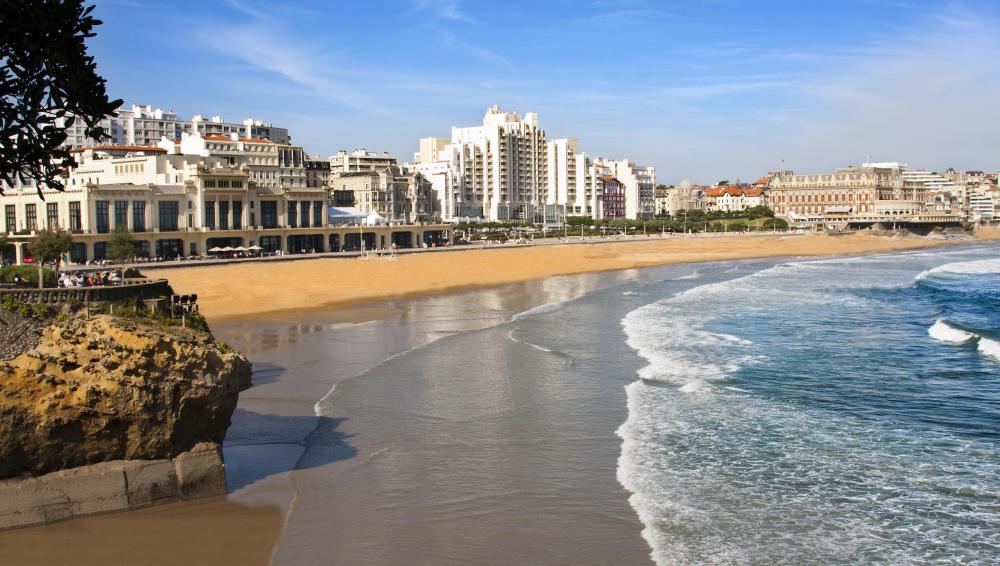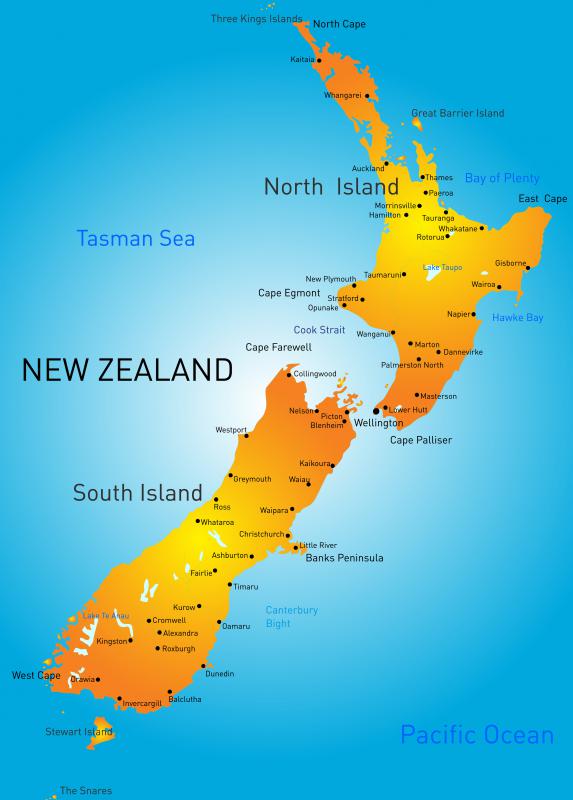At WiseGEEK, we're committed to delivering accurate, trustworthy information. Our expert-authored content is rigorously fact-checked and sourced from credible authorities. Discover how we uphold the highest standards in providing you with reliable knowledge.
What is a Nikau Palm?
A nikau palm, scientifically known as Rhopalostylis sapida, is the only species of palm tree that is considered native to New Zealand’s mainland area. This perennial plant belongs to the family Arecaceae and occurs primarily in the warmer lowland forests and coastal regions. The palm can be easily recognized by its circular trunk, which is evenly scarred with ring markings from fallen leaves. A single divided leaf of this palm, commonly called a frond, can grow to a length of 10 feet (3 m).
This tropical plant is also referred to as a shaving brush palm. Large clusters of light purple flowers grow from its lowest branch. The inflorescence, a group of flowers on the stem, has multiple branches and measures 8 to 16 inches (20 to 40 cm) long. These flowers are tightly packed and either male or female. The male flowers are composed of six reproductive organs, normally called stamens, and are borne in pairs while the female blooms are solitary. Insects, particularly bees, which are the major pollinators, are attracted to the sweet and sticky nectar of nikau palm flowers.

Fruits of the nikau palm are oblong, turn red when mature, and measure about 0.4 inches (1 cm) in length and 0.3 inches (7 mm) across. The hard berries can be eaten when green. In fact, these fruits are a favorite food of a wood pigeon known as the kererū.
The nikau palm is a very slow-growing plant. It usually takes 40 to 50 years for a trunk to be formed, and a height of 33 feet (10 m) can be attained only after 200 years of existence. Every year, an average of two fronds are shed, and the scars left on the trunk can be used to determine a rough estimate of the plant’s age.

Land conversion and human development of the lowland and coastal areas have greatly disturbed the habitat of nikau palms and reduced their numbers. The production of new plants is also limited because fruits and flowers are eaten by animals. In addition, the fruits take almost a year to fully mature, therefore contributing to the slow reproduction of new palms.
In the life of Māoris, the indigenous Polynesian people of New Zealand, nikau palms have always been considered significant. The leaves were used to wrap food prior to cooking; to thatch houses; and weave baskets, hats, or mats. Immature flowers are edible and can be cooked similarly to the cauliflower. Māoris also made pots and storage containers using the outer portion of the trunk.
AS FEATURED ON:
AS FEATURED ON:












Discuss this Article
Post your comments